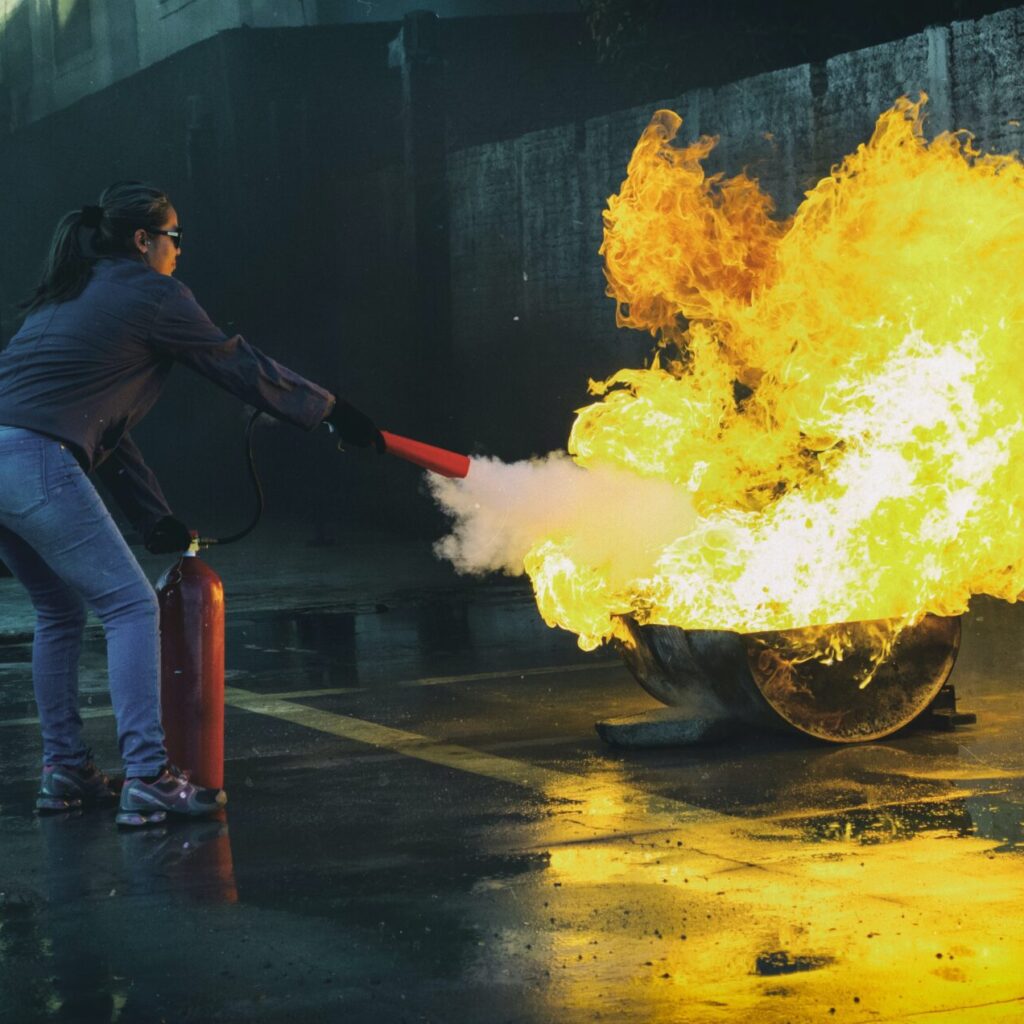Fire safety is a crucial aspect of any home or workplace. Knowing how to use an extinguisher effectively can make a significant difference in protecting lives and property. In this guide, we’ll walk you through the essential steps of using an extinguisher, providing you with the knowledge and confidence to act swiftly in the event of an emergency.

https://www.facebook.com/silverstringchemicals/
Table of Contents:
- Understanding Extinguishers
- Types of Extinguishers: Class A, B, C, D, and K.
- Components of a Extinguisher: The nozzle, pressure gauge, pin, handle, and the extinguishing agent.
- Choosing the Right Extinguisher
- Matching the extinguisher to the flames type.
- Consideration of the environment and potential fire risks.
- Regular maintenance and inspection.
- Remembering the PASS Technique
- P: Pull the Pin
- Explanation of the importance of removing the safety pin before use.
- A: Aim at the Base of the Fire
- The significance of targeting the source of the blaze rather than the flames.
- S: Squeeze the Handle
- Proper technique for squeezing the handle to release the extinguishing agent.
- S: Sweep from Side to Side
- Explanation of the sweeping motion to ensure complete coverage of the flames.
- P: Pull the Pin
- Steps to Using an Extinguisher
- Step 1: Assess the situation and ensure a clear evacuation path.
- Step 2: Identify the type of fire and choose the appropriate extinguisher.
- Step 3: Stand at a safe distance from the flames.
- Step 4: Pull the pin to break the seal and unlock the operating handle.
- Step 5: Aim the nozzle at the base of the flames.
- Step 6: Squeeze the handle to discharge the extinguishing agent.
- Step 7: Sweep the nozzle from side to side until the fire is completely extinguished.
- Common Mistakes to Avoid
- Not checking the expiration date of the extinguisher.
- Using the wrong type of extinguisher for the fire.
- Standing too close to the fire.
- Not aiming at the base of the flames.
- Training and Practice
- The importance of regular drills.
- Seeking professional training on extinguisher usage.
- Encouraging a culture of fire safety in homes and workplaces.
- Maintaining Fire Safety Beyond Extinguisher Use
- Smoke alarms and detection systems.
- Emergency evacuation plans.
- Communication strategies during an emergency.
Conclusion:
Incorporating safety practices into your daily life is essential for protecting yourself and others from the devastating effects of Blaze. Understanding how to use an extinguisher is a fundamental skill that everyone should possess. By following the steps outlined in this guide and being proactive in blaze prevention, you can contribute to creating a safer environment for yourself, your loved ones, and your community. Stay informed, stay safe!
